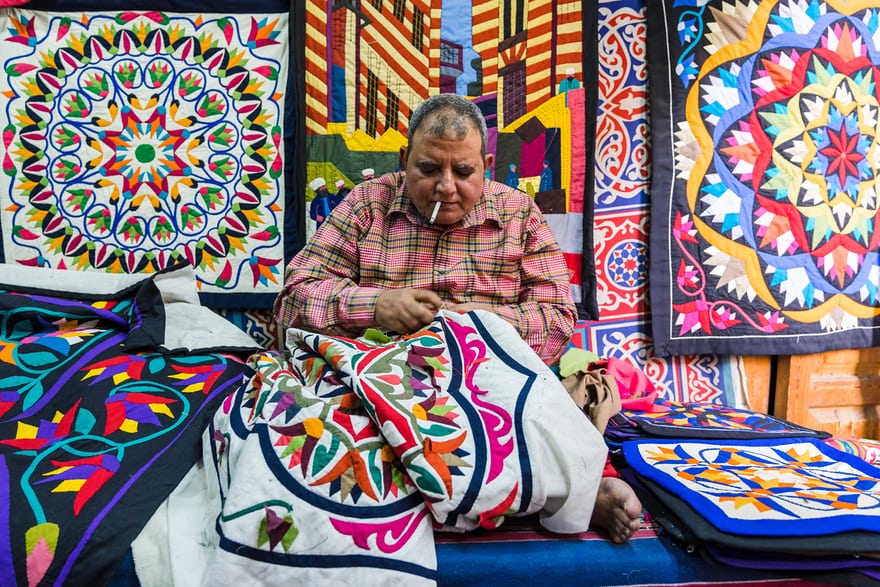

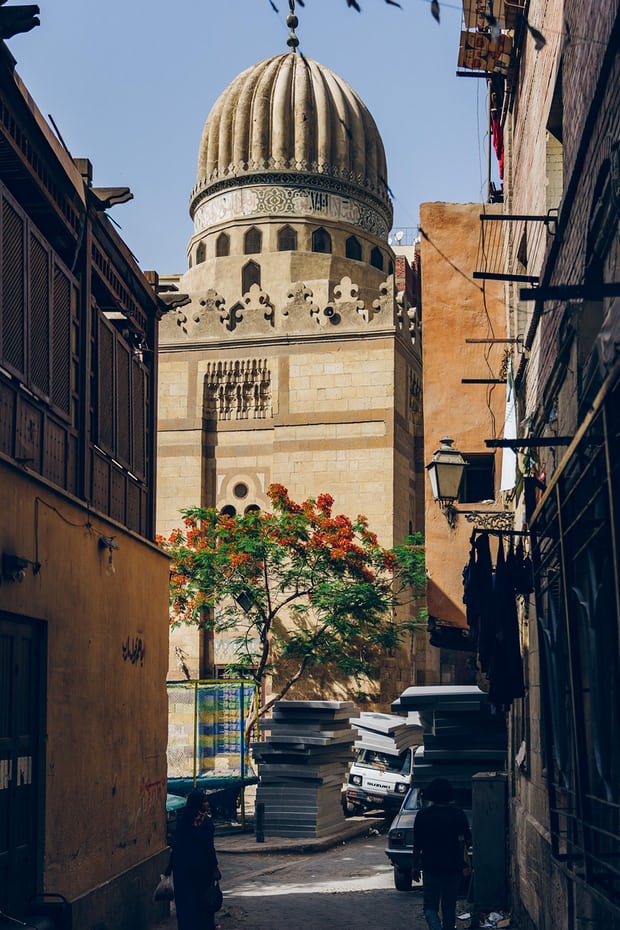
Photo: Christopher Wilton-Steer
“Whatever textiles are produced in the world, the poor of Cairo keep and sell to those who are interested,” wrote Evliya Çelebi, a Turkish traveler, in 1671. Nearly 350 years later, this activity is a tradition in al-Darb al-Ahmar, a neighborhood southeast of central Cairo with a population of about 100,000 people. It is home to craftsmen from all walks of life, from making tents, books, boxes, and brass lanterns to glass bowls and silk carpets.

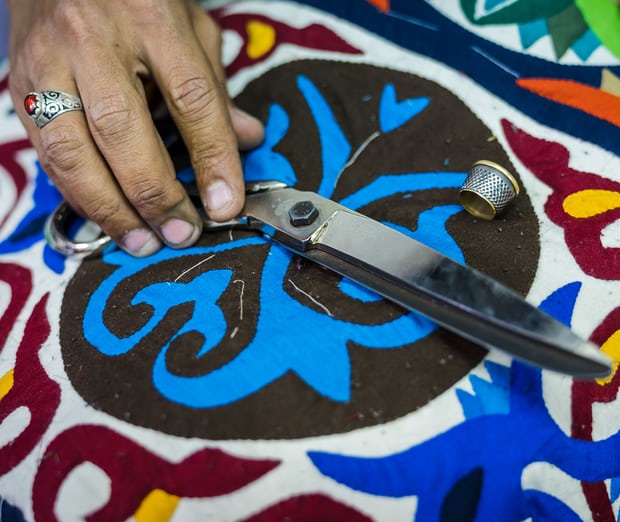
Photo: Christopher Wilton-Steer
The Street of the Tentmakers captures this commercial spirit. Built in 1650 as a covered street, the neighborhood is a series of workshops, the interiors of which are decorated with woven fabrics. From his stall in a Turkish-era wall, weaver Hasan says al-khayyamiya, tentmaking, dates back to the time of the pharaohs. Some of today’s weavers come from families that would have made kiswa, the cloth covering the great stones of Mecca, as well as tents, cloths, and saddles for the pilgrimage.

Photo: Christopher Wilton-Steer
In al-Darb al-Ahmar, the only foreign faces are young Muslims from Indonesia attending a program near al-Azhar University. Most Western tourists now avoid Cairo due to security concerns; there have been attacks on Egypt's Christian minority in recent years.
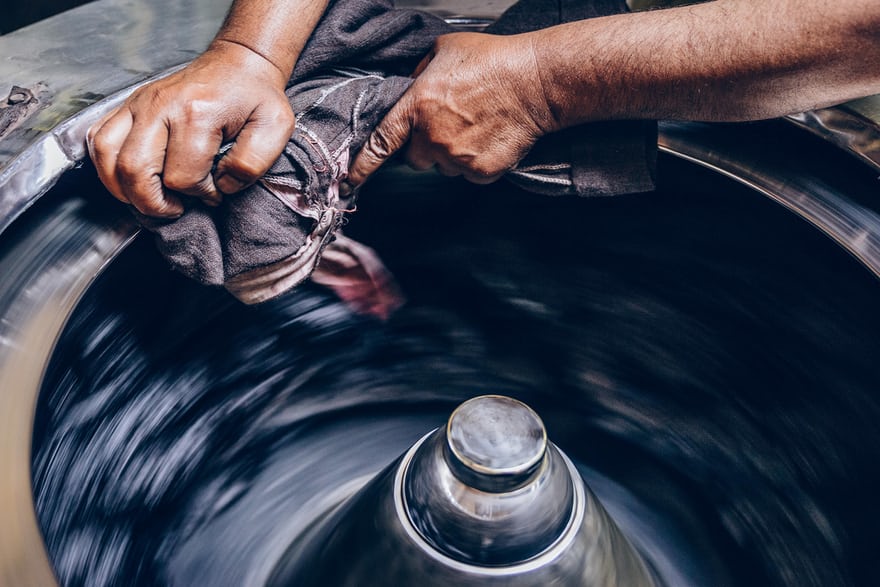
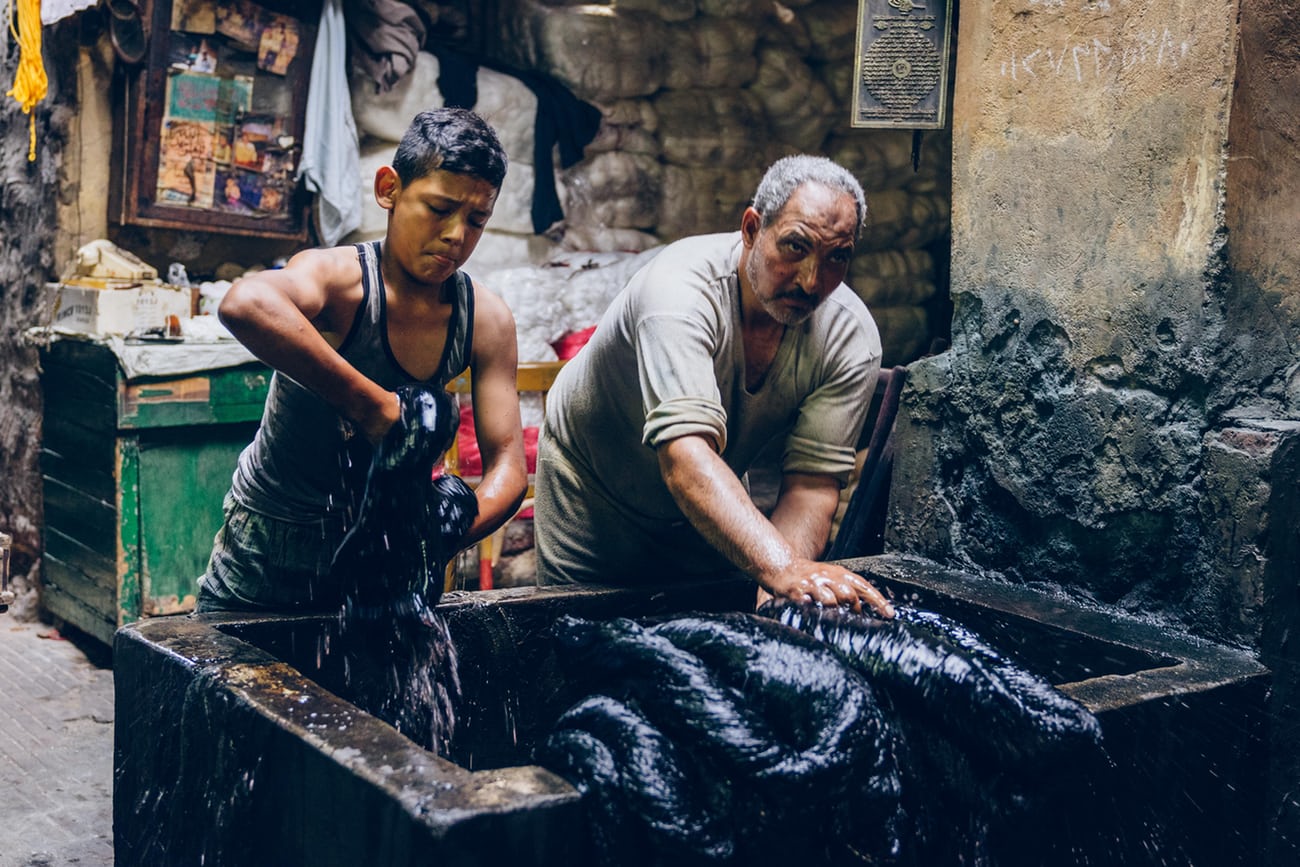
Photo: Christopher Wilton-Steer
The area, just under a square mile in size, contains more than 40 monuments built during the Fatimid, Ayyubid, Mamluk, and Turkish periods. In collaboration with the government, many sites, such as the Aqsunqur Mosque and the Amir Khayrbak Industrial Complex, have been restored by the Aga Khan Development Network (AKDN), a non-sectarian organization that works to improve the well-being of people in developing countries around the world.
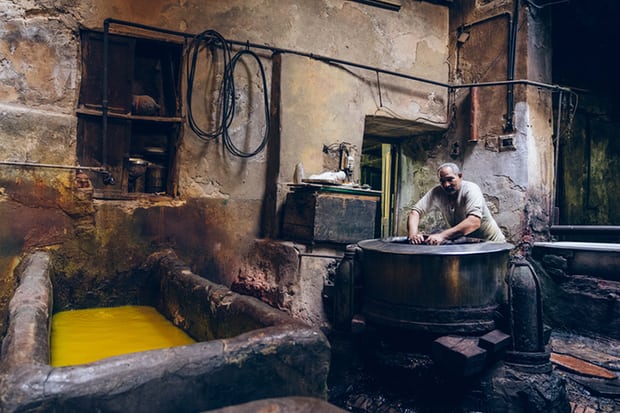

Photo: Christopher Wilton-Steer
Under Nasser’s revolutionary regime, business was good. “The Russians gave us weapons and we gave them cloth,” says Salama, a dyer for 73 years. But things changed in 1967, after the disastrous Six-Day War against Israel. Nasser came to Sadat, and he liberalized the economy, encouraging both domestic and foreign investment. Diversified goods and cheaper goods flooded into the country, hurting small manufacturers. Many lost their jobs.


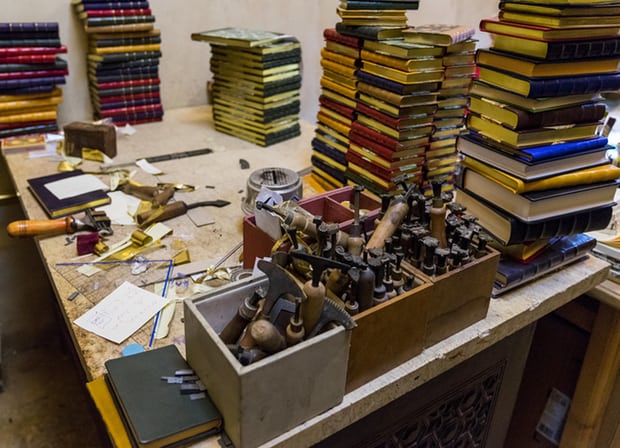
Photo: Christopher Wilton-Steer
Most craftsmen and women are immersed in the past, trying to revive elements of their traditional culture every day. In the workshop of two bookbinders near Cairo’s al-Azhar mosque, Aslam and his colleagues bind 150 books in a day. They are binding tafsir, a commentary on the Quran, the Muslim holy book.
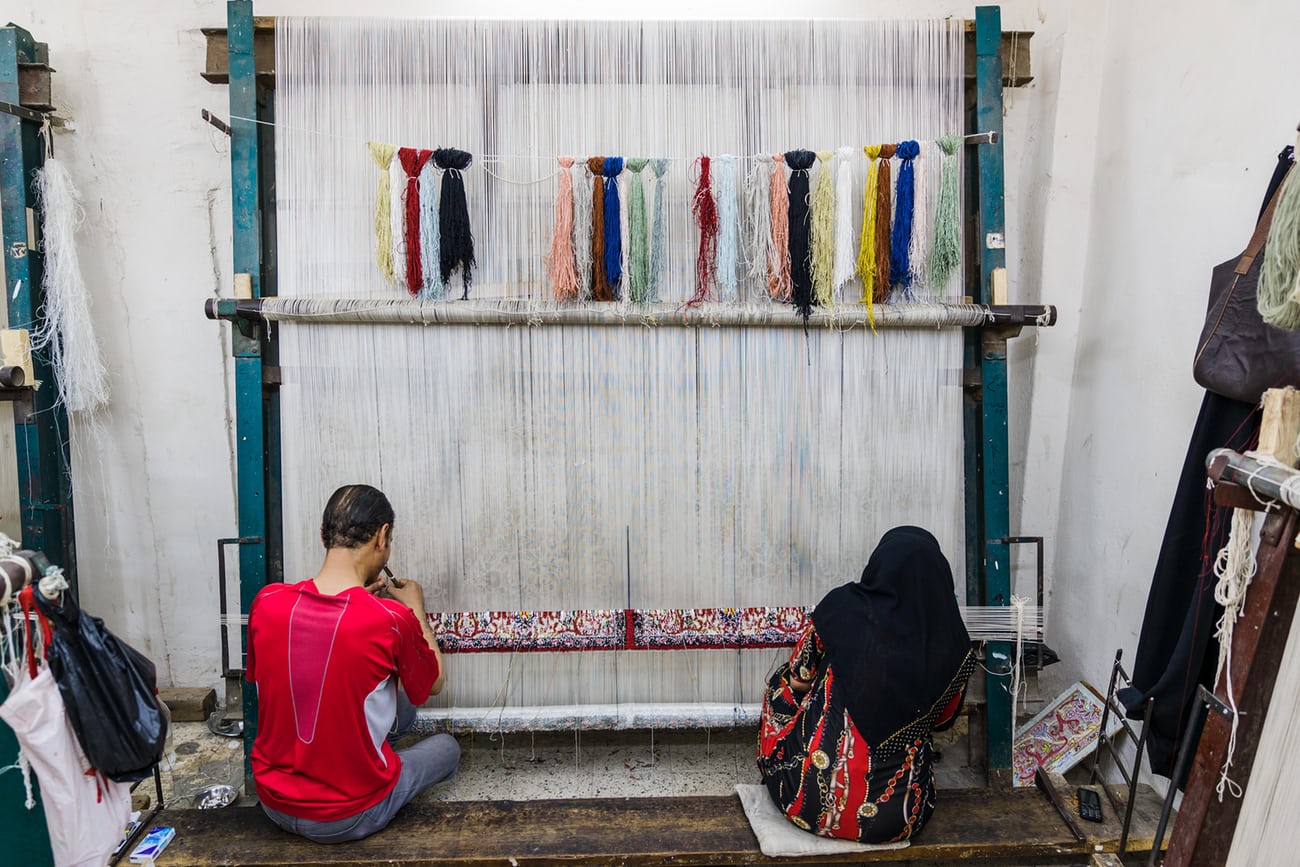
They sat on a low chair, their faces focused on the design that was gradually taking shape before their eyes.
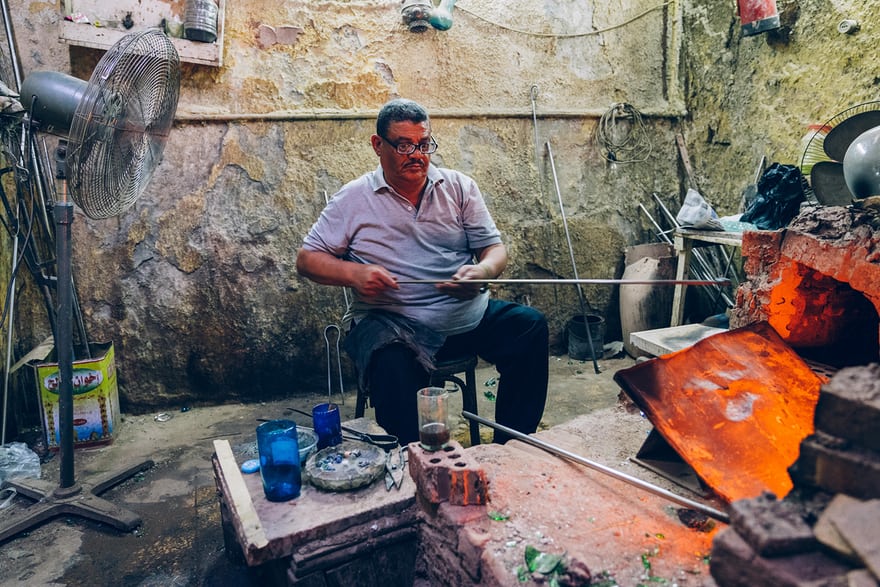

Photo: Christopher Wilton-Steer
Near al-Darb al-Ahmar is the city of the dead, where locals were buried since the Muslim conquest of Egypt more than 1,300 years ago. Now, because of rapid urban development, 250,000 Cairo residents still live in temples and mausoleums. Among them is a former boxer turned glassmaker – Hasan “Hodhod”.
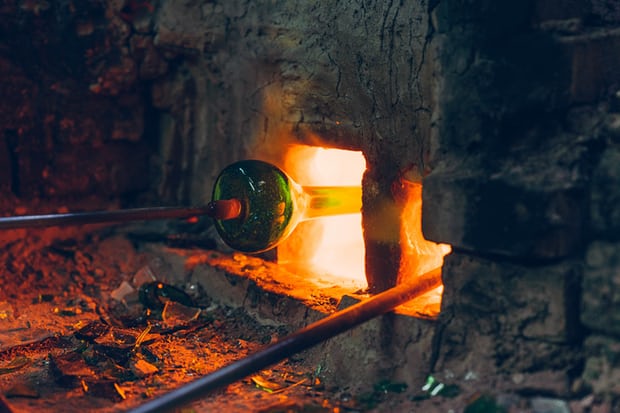
Photo: Christopher Wilton-Steer
Hodhod said his work was associated with ghosts and the legend of King Solomon deceiving the Queen of Sheba. Hodhod's father tried to dissuade his son from continuing his difficult work, trying to scare him into thinking that glassblowing was a job for spirits.

Around dusk, the delivery boy carried a meter and a half long tray filled with aish baladi - freshly baked Egyptian flatbread - on his head.Photo: Christopher Wilton-Steer

Photo: Christopher Wilton-Steer
Mohamed is a third-generation lampmaker. In his workshop, half-empty piles of brass and iron lanterns sit forgotten on shelves. To create his ornate metalwork, he draws on Cairo’s heritage, using Mamluk, Coptic, Andalician and Moroccan designs.
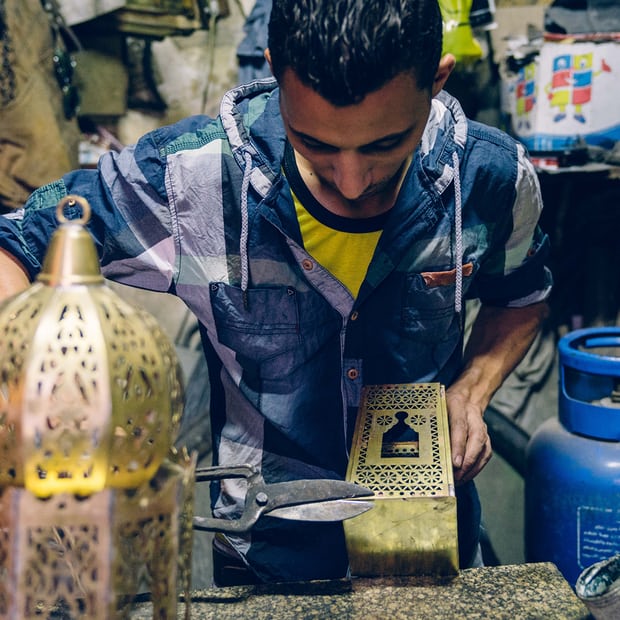

Photo: Christopher Wilton-Steer
“It was the hardest time,” Mohamed said, as raw material prices were rising and tourists, his main customers, were fewer. Then he found an unexpected silver lining: Syrians came because of the war. They built factories to produce upholstery and clothing. Through their business, he continued to contribute to the local economy.
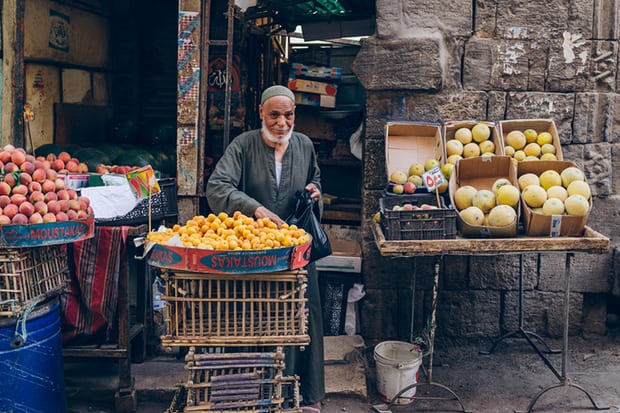
Photo: Christopher Wilton-Steer
At the end of my stay in al-Darb al-Ahmar, I was struck by the notion that the craftsmen here have a resilience that can withstand historical events. When I asked an 81-year-old woman who dyes cloth how the effects of the 2011 Arab Spring and subsequent counter-revolution had affected the artisans’ lives, she answered calmly, “Nothing has changed, except the president. Our lives are the same, the food I eat, the money I earn, ... the same.”
Amidst the many creations and innovations of history, artisans have been at the heart of it all. Despite the turmoil in this country and the wider world, they have remained steadfast.
Ngoc Anh (According to TheGuardian)





